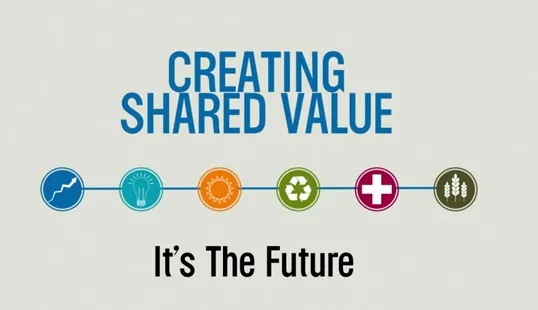Knowledge is all around us. But sometimes you just can't find a moment to sit down and absorb it. Wouldn't it be great to get the nitty gritty in a 5 to 10 minute read? I've got your back.
Let's get right to it, with the first Steemit Book Summary
What Great Brands Do; 7 principles to success.

Principle 1: “Great Brands Start Inside”
Culture is a popular buzzword in corporate circles. The attention that many firms pay to corporate culture is merely “invertising” – promotional messaging to employees to get them to buy what senior management wants to sell. Instead, use your brand to educate, engage and motivate your employees. Tell them everything about your brand, so they understand the values it represents and the actions they need to take to embody it. The activity within your firm and how it deals with customers and external stakeholders should align with your brand and its stated values.
“Your brand is not your image; your brand is what you do. Brands are about action, not advertising.”
Develop a “brand toolbox” that tells your employees how to bring the values your brand signifies into operational use. Your toolbox should include “content and decision guides” in the form of “workbooks and downloadable PDFs.” Detail your brand strategy, the principles behind your brand values, examples of how employees can apply these values in their daily work, and guidelines on how to make decisions that align with the brand. This concrete method develops an authentic corporate culture that exemplifies your brand and its values. Promote your brand values to your customers and external stakeholders as well.
“When you can’t see any daylight between what you believe, what you practice, what you offer and what you say about yourself, you are doing what great brands do.”

Principle 2: “Great Brands Avoid Selling Products”
In 1987, Nike launched its “Just Do It” campaign, an effective marketing program the firm sponsored profitably for 10 years. “Just Do It” doesn’t overtly sell Nike athletic shoes. It promotes Nike’s values – its brand ethos. The campaign established strong emotional connections with customers and helped them become physically active. “Just Do It” set Nike products apart from its competitors’ offerings.
“Just Do It” exemplifies “emotional brand building.” Instead of explaining the product, it answers a more important question: “How does it make me feel?” Today, product efficacy matters less than “developing mind share and heart share” among consumers.
“When everyone in the organization is truly engaged with the brand, people naturally involve themselves in the development and delivery of brand value.”

Principle 3: “Great Brands Ignore Trends”
In 2011, Oprah Winfrey brought her popular TV show to an end, bucking the trend of staying with something that is successful and profitable. Winfrey has always done things differently. She does not license her name. She has not gone public. She avoids prevailing commercial trends. This is how great brands should act; they think for themselves and “anticipate and advance cultural movements.” To follow Winfrey’s example, scan the “media, cultural developments” and brand activity. Listen to the public; notice who sets the tone and why. Identify emerging themes.
“It is brand research that enables a company to develop deeper, richer, stronger connections with customers and sustain their claims to strong and differentiated value propositions.”
Periodically perform a brand analysis to determine your brand’s strengths and to find opportunities to expand and extend it. This involves basic fact-finding, customer research, stakeholder interviews and audits of your “brand experiences” and distribution channels.

Principle 4: “Great Brands Don’t Chase Customers”
Lululemon Athletica became successful by featuring high prices and never offering discounts on core products. “We don’t try to appeal to everybody,” says Laura Klauberg, its “brand and community” senior vice president. Lululemon does not chase its customers; it targets particular consumers and works hard to feature the quality products they want.
“The more clearly you can see your brand’s external cultural relevance, the better you are able to align it with your internal culture, and with the emotional connection to your customers – and vice versa.”
The stronger your brand identity is, the easier it will be to attract your preferred customers. Carry out the necessary research to identify your target audience, such as “‘needs-based’ segmentation” analysis, which recognizes the factors that drive consumer demand for your product. Once you identify your best customers, develop a “brand-centered customer strategy” to attract them.
“Emotional brand building requires you to develop a personal dialogue with your customers on the issues that are most meaningful to them.”

Principle 5: “Great Brands Sweat the Small Stuff”
While companies with great brands stay focused on the big picture, they also pay close attention to details. Apple co-founder Steve Jobs understood that people do judge a book by its cover. That’s why all facets of Apple products align with their brand identity, “from the handles of the first iMacs to the signature white color of the iPod’s headphones to the roundedness of the iPad’s bottom edge.” Minute attention to detail helps build a great brand.
Use the “Brand Touchpoint Wheel,” a graphic tool, to determine your stakeholders’ priorities. First list “all the ways your company communicates with the outside world and all the experiences” it offers. Then show all the “internal departments and processes” that create each opportunity for consumers to experience your brand. Use this graphic to determine which opportunities do not properly align with your brand and then refocus them to be a better fit.
“If you identify your best target customers and focus on the unique value you bring them, you strengthen your brand as well as your ties to these customers.”

Principle 6: “Great Brands Commit and Stay Committed”
Shake Shack grew from a single hot-dog cart in 2001 to a hugely popular restaurant chain with 30 stores worldwide by never wavering from its core vision – preparing and delivering delicious food in a distinctive, delightful environment. The firm does not offer catering or curbside service. It never dilutes its primary mission or its offerings.
“People buy according to how brands make them feel, or what identity they help them experience and express.”
Krispy Kreme made that mistake. In the late 1990s, this southeastern US doughnut chain was a popular brand, offering customers a fresh “hot-doughnut experience.” It served just-made doughnuts in shops where internal windows showed the cooking and production line. In 2000, the company went public, with negative consequences. To satisfy its shareholders, Krispy Kreme expanded its distribution to groceries and gas stations. Before long, Krispy Kreme’s fresh, hot-doughnut image lost credibility. Customers stopped thinking of its doughnuts as special as they became farther away from the aromatic, intriguing production display. Krispy Kreme’s failure to stay committed to a unique identity nearly destroyed its brand. Today, Krispy Kreme has returned to its roots, reconnected to its mission and regained profitability.

Principle 7: “Great Brands Never Have to ‘Give Back’”
Corporate social responsibility (CSR) carries weight in the marketplace. Unfortunately, at many firms, CSR only means making “attention-getting donations or sponsoring the usual organizations.” This superficial embrace of CSR is known as “goodwashing.” Great brands transform CSR to “creating shared value” (CSV).
“With brand-as-business, the expenses of building the brand are usually indistinguishable from the expenses of building the business.”
For example, in 2008, AT&T launched its “‘Aspire’ program,” investing up to $350 million to help high school students prepare for the real world of work. By 2013, AT&T employees had spent 270,000 hours mentoring and assisting students to get them ready for life after school. This inventive initiative is not conventional philanthropy. It demonstrates that AT&T is a great brand that does real good. Firms like AT&T don’t have to “give back” anything. That negative concept suggests they owe a debt to society. Instead, CSV lets brands deliver consistent value.

THIS IS A SUMMARY. I DO NOT HOLD ANY RIGHTS ON THE SUMMARISED WORK. IF YOU WOULD LIKE TO SUPPORT THE WRITER OF THIS BOOK, PLEASE LOOK INTO THE FULL WORK "What Great Brands Do; The Seven Brand-Building Principles that Separate the Best from the Rest" by Denise Lee Yohn